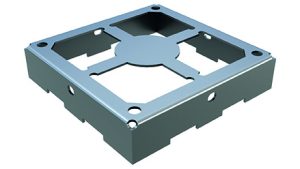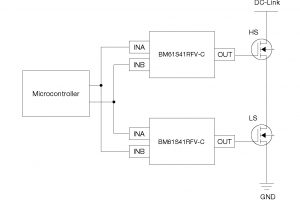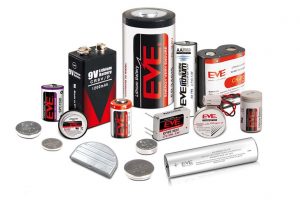 Not so long ago there was only one reason to think about electrical grounding: safety. Protecting people from electrical shocks remains a paramount objective, but modern consumer electronics equipped with multimedia and communications capabilities means that developing a robust and comprehensive grounding strategy takes on new importance.
Not so long ago there was only one reason to think about electrical grounding: safety. Protecting people from electrical shocks remains a paramount objective, but modern consumer electronics equipped with multimedia and communications capabilities means that developing a robust and comprehensive grounding strategy takes on new importance.
Grounding is a complex subject, yet its essential role remains protecting sensitive, high-performing electronic devices and products. Proper grounding avoids circuit faults and any subsequent damage to expensive components. It also thwarts the accumulation of static electricity and even enhances the performance of devices and appliances by minimising the consequences of EMI (electromagnetic interference).
Common ground
In the electronics realm there are many different types of grounds, but the two most prevalent are common ground and chassis ground.
In contrast with grounding to earth, a common ground is not a physical ground. It is a reference point within a circuit for voltage measurements. By allowing the negative terminal of a DC power supply to serve as the common ground and connecting the positive terminal of a different DC power supply to the same point, the circuit can have both positive and negative power supplies. As a result, the connection configuration within a circuit and the point selected for the zero-voltage reference determines whether a supply voltage is positive or negative. This approach is especially relevant in devices that rely on battery power, such as many modern consumer electronic devices, where there is no earth ground connection through wiring.
A chassis ground refers to a ground connection that connects all of the metal parts to the earth ground. Static audio equipment and domestic appliances are common devices that require a chassis ground.
Material matters
Ultimately, all electric devices need grounding and several material solutions are deployable to create this intentional and vital electrical path. The added value associated with these innovative materials tends to be similar, focusing on electrical and mechanical properties such as electrical conductivity, shielding from EMI and radio frequency interference, mechanical durability and easy installation. Electrical noise in the form of EMI or RFI can be particularly detrimental as it negatively affects the performance of electronic circuits, prompting errors in sensor measurements and potentially leading to the malfunction of sensitive devices.
There are various ways in which grounding helps to reduce electrical noise. First, it delivers a stable reference voltage level (typically 0V) for all electronic circuits in the device system. This common reference point supports more precise and repeatable signal measurements by mitigating the impact of noise.

Figure 1: Conductive gaskets and elastomers reduce the impact of EMI on system performance
In addition, grounding creates a low impedance path for noise currents, so they can easily flow back to their source or to earth. Grounding helps prevent the coupling of these currents into the circuits and reduces their impact on system performance by directing noise currents away from sensitive electronic components. This outcome is often achievable with the use of a conductive gasket or grounding solution (Figure 1). Depending on the design requirements, suitable gaskets can take the form of conductive foams/fabric-over-foams, conductive elastomers or metallic fingerstock.
Foam and fabric
A fabric-over-foam gasket comprises conductive fabric wrapped around a urethane or silicone foam substrate. Used commonly as a PCB-level grounding pad, this cost-effective solution provides low compression force with high conductivity, rendering it particularly suitable for almost all indoor EMI grounding and shielding applications.
Conductive foam gaskets are supplied in strips, sheets or continuous rolls for die cutting and feature embedded electrically conductive fibres. Similar to fabric-over-foam gaskets, they are cost-effective and offer low compression force and high conductivity.
Many modern applications can take advantage of conductive foams or fabrics, particularly when considering some of the industry’s current drivers and trends. For example, miniaturisation or compact size is a long standing trend for consumer electronic devices, especially passive, fit-and-forget ones such as routers that function in the background. As semiconductors continue to reduce in size and PCBs get more compact to reduce the physical size of the end product, the electronic components and systems are becoming more powerful. The result is growing demand for board-level shields made from precision-stamped metal, and cavity-to-cavity EMI isolation gaskets to prevent interference and crosstalk.
In such instances, conductive foams or fabrics serve as a grounding pad between boards, RF shields and heat sinks. They are not, however, the optimal solution for any electronic devices subject to environmental exposure.
Conductive materials
A good alternative to foam-based solutions for applications involving environmental exposure is conductive elastomers. Embedded with electrically conductive particles, these elastomers are suitable for chassis grounding and EMI shielding of enclosures or for connector grounding. Notably, conductive elastomers are fluid-resistant and offer protection from galvanic corrosion, supporting long product life. One consideration for these elastomers is that it will likely require a higher compression force to achieve proper grounding.

Figure 2: Metal fingerstock is suitable for high compression cycling applications
Metal fingerstock (Figure 2) offers a different approach in the form of bent metal for electrical grounding and direct metal-to-metal contact. It has a high current carrying ability, which makes this suitable for high compression cycling applications, including those that reach into the thousands. Like several other grounding options, however, it does not provide environmental protection.
Another option is metal mesh gaskets. These are essentially a knit wire mesh for the grounding and EMI shielding of enclosures, chassis and wire junctions. Metal mesh gaskets are specifically for applications that need small round or rectangular EMI seals such as waveguide choke flanges or shafts or small housings. This is a cost-effective solution that provides direct metal-to-metal contact, but again does not offer protection from outdoor environments.
Grounded and shielded
A complementary way to reduce electrical noise is to adopt grounded metallic shields (Figure 3), in cables or enclosures, for example. This approach can help to block the entry or exit of electromagnetic fields that cause electrical noise.

Figure 3: Stamped metal shields reduce the effect of EMI on PCBs
Upon connecting the shield to ground, the shield acts as a barrier that absorbs or reflects electromagnetic radiation, preventing it from interfering with electronic components.
By design, many grounding products also function as EMI shielding devices and are thus meant to serve as a conductive interface between shields and grounded surfaces. These grounded surfaces can be the enclosure itself or ground planes built into PCBs. It is important that a shield has a ground connection, or it will not provide the intended shielding effectiveness.
Ultimately, only a strategic grounding approach and correctly specified products will keep electronics operating safely and optimally. Grounding helps to maintain the integrity and performance of electronic circuits and devices of all shapes, sizes and functions. It does this in three ways: by providing a stable reference voltage level, by creating a low-impedance path for noise currents and by shielding electronic components.
 Electronics Weekly Electronics Design & Components Tech News
Electronics Weekly Electronics Design & Components Tech News



